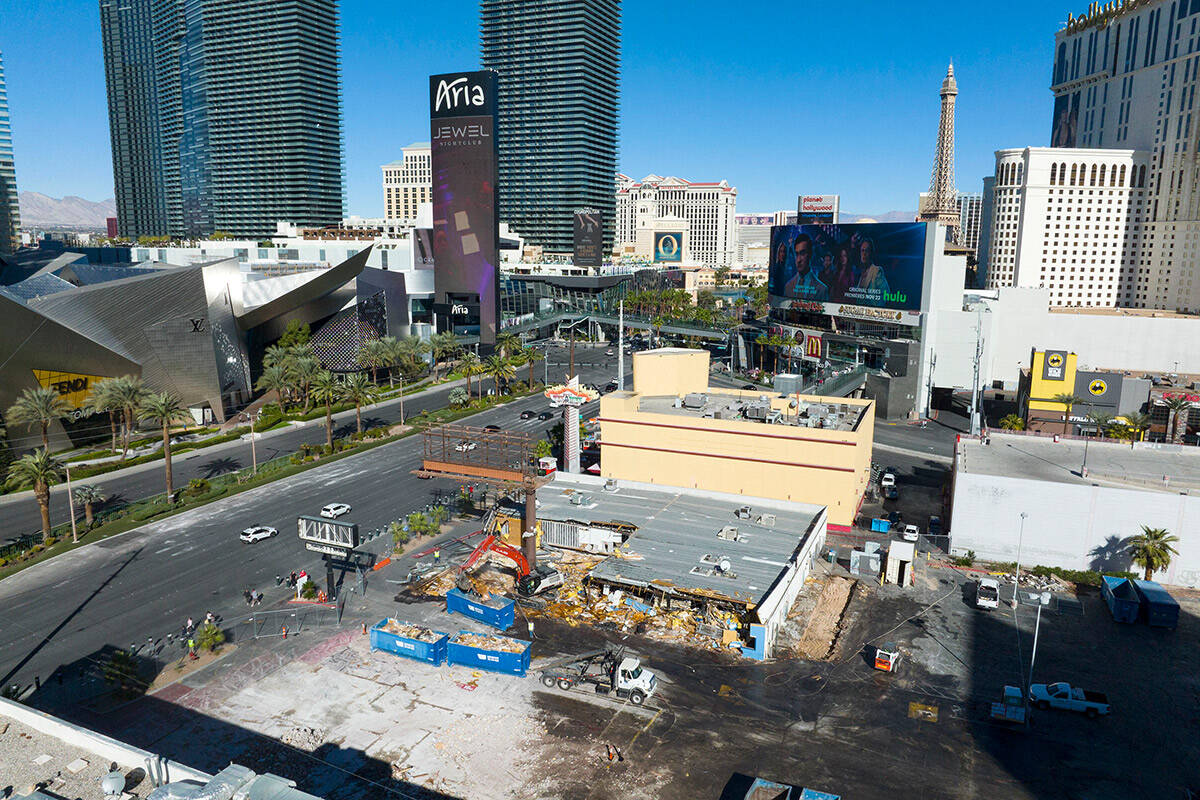It seemed like giant ceremonial scissors got plenty of use on the Las Vegas Strip in recent years.
Multibillion-dollar resort projects opened their doors to the public after years of development and marquee events brought further attention to Southern Nevada’s tourism industry. In 2023 alone, the $2.3 billion Sphere, $3.7 billion Fontainebleau and $780 million Durango hotel-casino all opened to the public. And during the pandemic, downtown’s Circa opened in 2020 with a reported $1 billion construction cost and Resorts World opened on the north Strip with a $4.3 billion price tag in 2021.
More than 10,000 hotel rooms are in planning and construction phases in 2024, according to hospitality analytics firm CoStar. About two-thirds of those are in the planning stages, and experts say it may be years before the public sees another large-scale project break out the grand opening finery.
“I think the market will need to absorb that (new hotel inventory) before there’s any material ramping in large scale casino-resort development on the Strip,” said John DeCree, a Las Vegas-based analyst with real estate firm CBRE Group Inc. “It might be a couple years before we see more significant supply.”
What’s on deck?
Viney Singal, an industry investor with Valtus Capital Group and real estate investment firm Capro Capital, said most of the industry is eager for planning progress on a Major League Baseball stadium project. The Oakland Athletics have begun plans to relocate to a new ballpark on the site of the Tropicana – which closes April 2. Team leadership has said it wants to construct the planned $1.5 billion stadium by the 2028 season.
Singal said the move is highly anticipated because entertainment destinations like Allegiant Stadium have demonstrated the region’s ability to absorb new guests and draw high-income spenders. That’s particularly important because luxury hotels are driving future development globally.
“Destination entertainment is the story for Las Vegas,” Singal said. “Having a professional baseball team not only supported by the local communities but also the out-of-town visitors reaches another level.”
The project also begets a potential new hotel-casino project by Bally’s, The Tropicana’s operator, and significant capital investment projects at aging casinos on the south Strip. MGM Resorts International operates the three properties neighboring the site – MGM Grand, New York-New York and Excalibur – and executives have said they plan to remodel the MGM Grand.
Other projects on the development horizon include a luxury resort concept from Houston billionaire Tilman Fertitta; Hard Rock International’s transition of The Mirage into its branding; and potential locals casino development from Red Rock Resorts, owners of the Station Casinos brand.
Interest rates affect planning
That doesn’t mean developers plan to put the shovels in the ground just yet. Industry watchers say that most of the major projects in recent development need time in the market before companies and investors can move forward with new construction plans.
DeCree said it takes large resort-casinos about two to three years to ramp to targeted returns. Both lenders and project leaders could be watching the newest Strip properties to see how the market responds before introducing new hotel supply.
“I think a lot of those projects, particularly on the Strip, are kind of question marks at this point,” DeCree said, pointing to long-ramps in development and construction at Resorts World and Fontainebleau as examples of the lengthy process for large-scale projects. “What everyone will be watching is what type of returns are feasible given the size of investment and construction costs.”
Interest rates are also a factor in development decision-making. The Federal Reserve increased rates 11 times between March 2022 and July 2023 as part of its goal to tamp down inflation. The hikes caused a slowdown in transactions, like new investment and mergers, because it was difficult to underwrite return and risk, DeCree said. But the Fed has signaled it expects to cut rates in 2024.
“When we look at current interest rates on a historical basis, they’re not in crazy territory,” DeCree said. “It’s that they’ve increased so rapidly. But we’re not in an extremely high interest rate environment so I think if people need to get more comfort in the economic outlook we could see some activity even if we don’t have a material decline in interest rates.”
New build alternatives
Though there are few large-scale projects expected this year, there’s still opportunity for change on the Strip.
Mergers and acquisitions, rebrands, conversions and partnerships are popular transaction types that could still happen in the back half of 2024. Zach Demuth, global head of hotels research at JLL Hotels and Hospitality Group, said those are more appealing to underwriters because they can provide a short-term return on investment.
Demuth pointed to the recent licensing partnership between MGM and Marriott International as an example of new development alternatives. The deal extends Marriott’s reach into the Las Vegas market without the time and cost to build a new resort, while MGM can access a larger customer base.
Conversions are also a ripe opportunity for change on the Strip. He pointed to Fertitta’s luxury project on the site of the former Travelodge, which could include a 2,420-room upscale hotel with restaurants, convention space, a spa and theater, among other amenities.
“Is there an opportunity for a well-capitalized investor to buy the existing hotel and either fully renovate it, convert it, up-brand it, change its footprint, change its configuration?” Demuth said. “That’s something in Vegas in particular that is a real opportunity.”
McKenna Ross is a corps member with Report for America, a national service program that places journalists into local newsrooms. Contact her at mross@reviewjournal.com. Follow @mckenna_ross_ on X.

